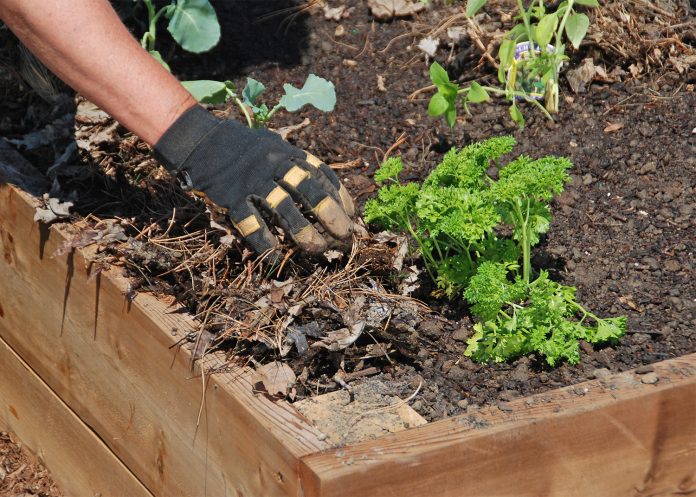
You can double the benefit of every gardening task while keeping your garden looking its best. You’ll reduce your workload, help your landscape flourish, and have more time to enjoy its beauty.
Don’t spend time and energy bagging and hauling landscape trimmings to the recycling center. Put it to work in your garden. Use shredded leaves, evergreen needles, herbicide-free grass clippings, or other pest- and weed-free organic material as mulch. Spread a one-to-two-inch layer of these materials over the soil around annual and perennial flowers and vegetables.
Spreading organic mulch over the soil surface helps conserve moisture, suppress weeds, moderate soil temperatures, protect the soil during heavy rains, and improve the soil as it breaks down. Besides all these benefits you’ll be burning calories and strengthening your muscles.
Convert larger tree and shrub trimmings into wattle fences, arbors, or plant supports. Or chip them into mulch to spread around trees and shrubs or as pathways throughout the landscape. You don’t need to buy a chipper but may want to team up with your neighbors to rent one. Maintain a two-to-three-inch layer of mulch around these plants. Keep the mulch away from the tree trunks and crowns of the plants.
Still more landscape trimmings? Start a compost pile if your municipality allows it. Transform plant-based kitchen scraps and landscape trimmings into a valuable soil amendment. Do not add meat, fat, or bones that can attract rodents. Avoid adding weeds gone to seed, perennial weeds like quackgrass and bindweed, and plants infected with disease or insects. Most gardeners do not compost at high enough temperatures to kill these organisms, so they get added back to the garden with the compost.
Compost is good for the environment and helps build healthy soil more equipped to retain moisture, provide nutrients, and help suppress some plant diseases and insect pests.
Continue growing lawn grass tall and mowing high as long as your grass is actively growing. Taller grass is more likely to outcompete the weeds and forms deeper roots making it more drought tolerant. Minimize the stress by removing no more than a third of the total grass height each time you mow.
Improve your lawn’s appearance, save time, and use fewer resources with sharp mower blades. You can mow faster with sharpened blades and your mower will consume up to 22% less fuel. Lawns will also use up to 30% less water. Sharp mower blades make a clean cut that is less noticeable plus the wound closes quickly, helping you grow a healthy better-looking lawn.
Leave the clippings on the lawn. They add nutrients, moisture, and organic matter to the soil. A season’s worth of clippings equals one fertilizer application so every time you mow you are fertilizing the lawn and improving the soil.
Finish every garden chore with a bit of cleanup. Sweep clippings, plant debris, and fertilizer off walks, drives, and patios, so it won’t wash into the storm sewer. Keeping plant debris out of our waterways is good for us and the environment.














